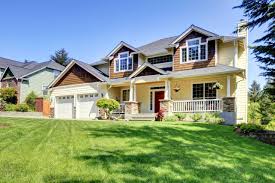Business & Finance
Beyond Square Footage: The Intangible Factors That Secretly Influence Your Home’s Value

Location Matters Far More Than You Think
“Location, location, location.” This old real estate adage carries weight for a reason, but there’s more to it than most realize. While buyers may focus on an address, seasoned professionals understand that granular elements, such as proximity to schools, shopping, hospitals, parks, and even major highways, can create significant differences in perceived value from one block to the next. From a seller’s perspective, it’s not just about boasting how close your home is to downtown—it’s about how the immediate area shapes daily life. According to Oklahoma City OK real estate experts The Kirby Group, homes in vibrant communities with easy access to amenities, strong economic development, and walkability don’t just sell quicker—they regularly command offers above asking price when demand surges.
Location plays a significant role in determining a home’s value, influencing factors such as noise levels, air quality, and the direction of natural light. Even subtle factors, such as quiet cul-de-sacs, can increase the value of a home. Recent research by Zillow highlights the importance of amenities and walkability in boosting property value, not only in city dwellers but also in suburban and rural areas with strong local economies.
Curb Appeal: The First Impression Effect
Curb appeal is a crucial factor in forming a prospective buyer’s first impression when viewing a home. It sets expectations about the property’s overall maintenance and value. Investing in fresh landscaping, modern front doors, clean driveways, and inviting porch lights can increase the market value. Additionally, curb appeal serves as a signal of pride and neighborly care; communities with thriving lawns and gardens tend to see higher resale values and more competitive bidding. The Northern Hemisphere’s spring and summer selling seasons see the biggest boost from curb appeal, but even in winter, neatness and evergreen pops make a lasting impression. Neglecting these details risks losing out to similar homes that appear more appealing.
Community and Neighborhood Vibes
Intangible neighborhood elements, such as dog-walking, community picnics, and block parties, significantly influence a home’s appeal beyond private property lines. These subtle signs indicate a tight-knit community that fosters a sense of belonging and household harmony. Low crime statistics, organized watch groups, and visible pride help reinforce feelings of safety and a sense of well-being. These non-physical qualities often outweigh added amenities inside the home. Neighborhoods with active social media, holiday events, regular yard sales, and open communication attract and retain more residents, keeping demand high.
School District Reputation
Well-rated school districts command a premium, regardless of whether a buyer has children. A great education leads to a better future, and strong schools create a self-sustaining cycle of demand and stability. Homes in highly ranked districts are less likely to see dramatic value swings, even during broader market downturns. Buyers pay up to 10-20% more for homes zoned to top schools, and these properties tend to sell faster and experience less price haggling. Investors also snap up properties near reputable schools for their long-term appreciation and consistent marketability.
Unique Home Characteristics
Homes with unique features, such as hand-carved fireplace mantels, original hardwood floors, or distinctive architectural styles, can significantly influence buyers’ perceptions of similar listings. These unusual characteristics add a layer of story and connection, making buyers more likely to overlook minor flaws or pay a premium for properties with undeniable character and authenticity. In competitive markets, these details can lead to increased offers, higher closing prices, and fierce bidding wars. Modern upgrades, such as energy-efficient windows or thoughtfully designed home offices, also play a significant role in influencing buyers’ preferences.
Technology and Smart Features
Smart home technology has become a significant factor for buyers, offering high-speed connectivity, home automation, integrated security, and energy management systems. Homebuilder associations have found that most buyers are willing to pay extra for houses already equipped with popular smart features, sometimes choosing them over smaller but less modern competitors. Sellers who invest in practical tech upgrades, such as smart irrigation, Wi-Fi coverage, and solar paneling, position their homes as “future-proof,” earning a competitive edge in markets where buyers crave a seamless, connected experience.
Future Development and Local Planning
The home you buy today may be in a completely different neighborhood five years from now due to evolving city planning and development. Smart buyers and investors closely watch news about upcoming shopping centers, transit expansions, road improvements, and business parks. These projects boost confidence in a community’s future, encouraging both population growth and long-term investment.
Homes in areas poised for new public transportation, expanded greenways, or better schools often appreciate faster, even if none of those projects have broken ground yet. By reviewing city council meeting notes or local economic news, buyers can gain insight into which neighborhoods may be on the verge of transformation. A modest house today could become a hot commodity tomorrow solely because of forward-thinking civic planning and infrastructure upgrades.
How Intangibles Shape Market Perception
- Buzz on neighborhood Facebook groups, apps, or word of mouth can quickly make a street “the place to be.”
- Annual festivals, farmers markets, or public art projects add personality that money can’t buy but buyers crave.
- Being near bike trails, popular coffee shops, or celebrated school programs rewrites the narrative for an entire ZIP code.
Properties become more than just structures—they weave into the broader tapestry of local history and daily life. A home’s worth evolves with local stories, culture, changing tastes, and future projects, making intangible value a force to be reckoned with.
Final Thoughts
While square footage certainly factors into a home’s price, savvy owners and buyers should look well beyond measurements on paper. Emotional resonance, neighborhood character, valuable technology, and the community’s buzz influence a home’s true value in subtle but lasting ways. Whether you’re planning to sell tomorrow or invest for the next generation, remember: the most valuable qualities often resist easy categorization, quietly adding worth every single day.















